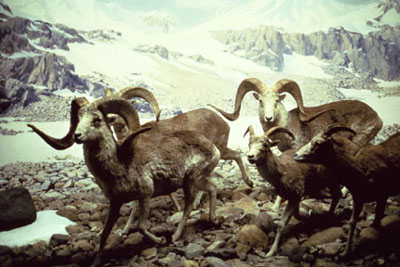

 The Accurate Reloading Forums
The Accurate Reloading Forums  THE ACCURATE RELOADING.COM FORUMS
THE ACCURATE RELOADING.COM FORUMS  Hunting
Hunting  Asian Hunting Forum
Asian Hunting Forum  Tiger Hunts
Tiger HuntsGo  | New  | Find  | Notify  | Tools  | Reply  |  |
| One of Us |
HI, I know that it is illegal to hunt tigers but i was just wondering about the logistics behind the ones shot legally. The reason, the price, and the waiting list, et.c Regards, S. http://www.youtube.com/watch?v...9pI&feature=youtu.be "Where is an elephant's sexual organs? on its feet because if it steps on you you're fu*ked" | ||
|
| One of Us |
Tiger hunting was legal in most of India until the early 1960 & in a few parts of India until 1971. The method of hunting with elephants and beaters was employed only by the wealthy Rajas & the senior colonial officials. This was obviously expensive as you had to be able to afford elephants - feed them, employ the mahouth, take care of all the accessories for the elephants, pay for the beaters and of course organise the hunt itself. The more common method of shooting from a machan over a kill or a bait was practiced by most hunters. This also required some good organization and know how - many tigers were chased away by poor preparation of the locati0n, machan etc. "When the wind stops....start rowing. When the wind starts, get the sail up quick." | |||
|
| One of Us |
those in the know are very quiet about this subject my friend | |||
|
| one of us |
"afford elephants...feed them" | |||
|
| One of Us |
Its difficult to express id dollars as the conversion rate was different back then and also the rupee was inherently stronger then. There was different types of hunting back then. The elephant part was the royal hunting and most people didnt shoot that way. Then there were outfitters which was how majority of the foreigners shot. The permit in itself was not very expensive. In some parts esp the foothills, one could lease a 'block' of forest for the season and shoot animals in the block. If one were a landowner and happened to have Tigers on his land, it was a bit cheaper. The 'cheapest' hunt (not poaching) involved one 'shikari' (sometimes used for the hunter himself but in thase case referrs to the tracker/guide), two more people to pick up and carry the tiger. This is assuming the shikari will tie the machan if needed and also help in the skinning. This was the bare minimum required. The usual set-up was as follows: 1 shikari 2 people to carry 1 skinner 1 fellow hunter for the 'cover shot' (the same function the PH serves in case the gun misses). If haanka was done then more were needed. Haanka=beat. There was no upper limit for the number of people or the logistics. Most states had a hunting department with a minister or suprindent who was incharge of hunting for the king. Even today there are a few old men surviving or some whose fathers were one of the following: Elephant jockeys or 'mahauts' shikaris Cheetah trainers Deer hunters (these people hunted to provide venison for the banquets, much like game keepers in British estates. Some other were commercial meat providers. Fishermen who also doubled as wildfowlers (not shooting types but they used to net geese to provide meat on order) In addition there were some tribes and castes who are traditional hunters. I can elaborate more if members are interested. I have just tried to give a snapshot view of the old times. Born to hunt, forced to work. | |||
|
| One of Us |
Thanks very much dablooana, great information Regards, S. http://www.youtube.com/watch?v...9pI&feature=youtu.be "Where is an elephant's sexual organs? on its feet because if it steps on you you're fu*ked" | |||
|
| One of Us |
I was referring to the past, but thanks Regards, S. http://www.youtube.com/watch?v...9pI&feature=youtu.be "Where is an elephant's sexual organs? on its feet because if it steps on you you're fu*ked" | |||
|
| Powered by Social Strata |
| Please Wait. Your request is being processed... |
|

Visit our on-line store for AR Memorabilia

